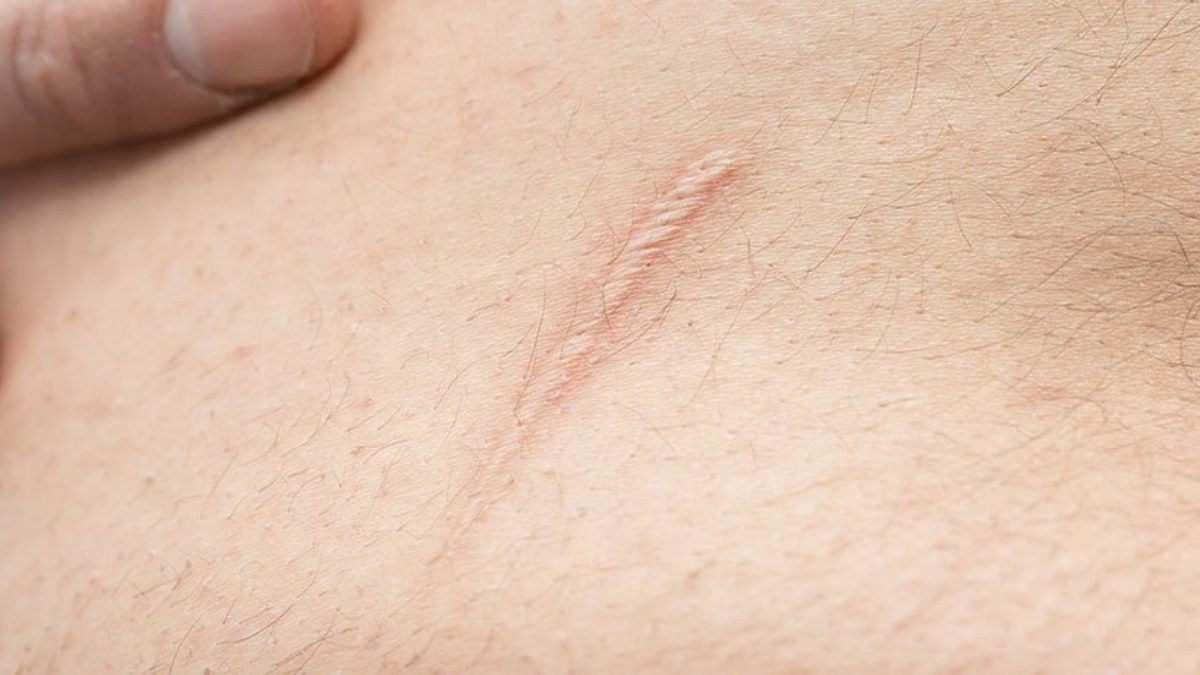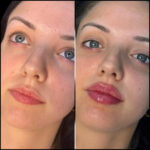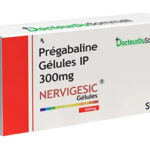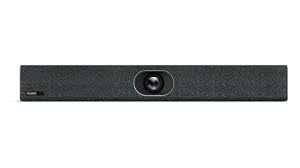Scars, whether from surgery, injury, or acne, can have a lasting impact on self-confidence. Thankfully, laser scar removal technology has rapidly evolved, offering patients more effective, precise, and non-invasive treatment options than ever before. These breakthroughs are redefining aesthetic dermatology by delivering superior outcomes with minimal recovery time. Dermatologists now use highly specialized lasers tailored to each scar’s type, size, and depth, revolutionizing how skin rejuvenation is approached. If you’re seeking professional guidance and cutting-edge techniques, Laser Scar Removal in Dubai has become a global destination for transformative dermatological care.
Understanding Laser Scar Removal: A New Era in Skin Rejuvenation
Laser scar removal is no longer a one-size-fits-all solution. The latest techniques are based on the customization of laser modalities to suit the patient’s unique skin type, scar characteristics, and healing capabilities. The primary goal is to stimulate collagen production, remodel damaged skin, and resurface the outer layer, all while ensuring minimal thermal injury to surrounding tissues. Top dermatologists now utilize multi-modal approaches, blending different laser types to deliver tailored results.

Fractional CO2 Laser: Precision at its Finest
One of the most significant advancements in laser scar removal is the Fractional CO2 laser. This system delivers microscopic beams of energy that penetrate deep into the skin, creating tiny columns of thermal injury. These micro-injuries trigger the body’s natural healing response and promote collagen regeneration. By leaving surrounding skin untouched, recovery is faster and safer than traditional ablative methods.
What sets it apart:
-
Ideal for deep surgical and hypertrophic scars
-
Customizable depth and density for personalized results
-
Less downtime due to fractionated delivery
Erbium YAG Laser: A Gentle Yet Effective Approach
The Erbium YAG laser is favored by many dermatologists for its gentle yet efficient resurfacing abilities. It operates with shorter wavelengths compared to CO2 lasers, making it excellent for patients with lighter or more sensitive skin. It precisely removes the upper skin layers, significantly reducing surface-level scars and improving overall skin texture.
Key advantages:
-
Minimal heat damage
-
Faster healing times
-
Highly effective for shallow acne or traumatic scars
Picosecond Lasers: High-Speed Transformation
Picosecond lasers, originally used for tattoo removal, are now making waves in the field of scar revision. With ultra-short energy pulses delivered in trillionths of a second, these lasers create a photoacoustic impact rather than a photothermal one. This means less heat, lower risk of hyperpigmentation, and a significant boost in dermal remodeling.
Why dermatologists recommend it:
-
Suitable for all skin tones
-
Lower risk of post-treatment complications
-
Effective for acne scarring and pigmentation issues
Pulsed Dye Laser (PDL): Ideal for Red and Inflamed Scars
For red, vascular, or keloid scars, dermatologists frequently turn to the Pulsed Dye Laser (PDL). This laser targets blood vessels within the scar tissue, reducing redness and flattening raised scars. It also alleviates itching or discomfort associated with hypertrophic or keloid scars.
Clinical benefits include:
-
Excellent for post-surgical scars
-
Soothes inflammation and discoloration
-
Safe and repeatable over multiple sessions
Non-Ablative Fractional Lasers: Subtle yet Significant
Unlike ablative lasers that remove layers of skin, non-ablative fractional lasers work beneath the skin’s surface to stimulate collagen without disrupting the outer layer. They’re commonly used for patients seeking less aggressive treatment or maintenance after more intense laser sessions.
Why they’re trending:
-
No surface peeling or significant downtime
-
Ideal for early or mild scarring
-
Safe for darker skin tones
Hybrid Laser Technology: Dual Wavelength Advantage
A recent innovation is the hybrid laser system, which combines ablative and non-ablative wavelengths in a single device. This dual approach enables comprehensive scar treatment—resurfacing the skin while encouraging deeper collagen remodeling.
Hybrid laser benefits:
-
Treats multiple scar depths simultaneously
-
Enhanced efficacy with fewer sessions
-
Versatile application on all scar types
Laser-Assisted Drug Delivery (LADD): Boosting Treatment Efficacy
LADD represents a futuristic step in laser scar treatment. In this technique, dermatologists use fractional lasers to create micro-channels in the skin, allowing for better penetration of topical medications like corticosteroids, growth factors, or retinoids. This enhances the treatment of stubborn scars that don’t respond to conventional lasers alone.
Dermatological innovation highlights:
-
Synergistic effect of laser + medication
-
Improved outcomes for hypertrophic and keloid scars
-
Reduced recurrence of scar formation
Real-Time Imaging and AI-Guided Laser Systems
Modern dermatology now includes AI-enhanced laser platforms that use real-time skin imaging to guide treatment settings. These smart systems analyze scar tissue density, pigment, and structure, automatically adjusting the energy, depth, and wavelength of laser delivery.
Game-changing features:
-
Personalized, adaptive treatments
-
Higher precision with fewer side effects
-
Continuous feedback for optimal safety
Robotic-Assisted Laser Platforms
With robotic advancements entering aesthetic medicine, robotic-assisted laser systems allow dermatologists to maintain exact control over laser application. These systems use computer-guided precision to deliver consistent energy across the treatment area, minimizing human error.
Benefits for patients:
-
Flawless uniformity in scar revision
-
Reduced treatment variability
-
Enhanced safety profile
Combination Therapy with Microneedling RF and Laser
While lasers alone are highly effective, some dermatologists now combine radiofrequency microneedling with laser treatments to tackle deep or stubborn scars. This combo therapy harnesses both heat and micro-trauma to kickstart tissue regeneration.
Why experts love it:
-
Dual stimulation of dermal repair
-
Suitable for atrophic and rolling scars
-
Dramatically improves skin tone and texture
Benefits of Modern Laser Scar Removal
The current landscape of laser scar treatments has revolutionized skin therapy with benefits that were unimaginable a decade ago. Here’s why dermatologists and patients prefer laser solutions:
-
Custom-tailored Treatments: Each laser session can be adjusted to suit different scar types and skin tones.
-
Minimally Invasive: No need for incisions or sutures—patients return to daily life quickly.
-
Precision and Safety: Targeted delivery ensures surrounding tissues are left unharmed.
-
Fast Recovery Time: Newer devices promote quicker healing and lower risk of complications.
-
Lasting Results: By stimulating collagen, these treatments provide long-term improvement in scar appearance.
FAQs:
Q1: Are laser scar removal treatments permanent?
Yes, most laser treatments offer long-term or permanent improvement in scar appearance. However, some types of scars may require maintenance sessions depending on severity and response.
Q2: How many sessions are typically needed?
It varies. For mild scars, 1–3 sessions may be sufficient. More severe or deep scars might require 4–6 sessions or a combination of technologies.
Q3: Can all skin tones be treated with lasers?
Yes, advancements like Picosecond and non-ablative lasers allow safe and effective treatment for all skin tones, with minimal risk of pigmentation issues.
Q4: What is the downtime after treatment?
Depending on the laser type, downtime can range from none (non-ablative) to 5–7 days (ablative). Dermatologists often guide patients through recovery with aftercare protocols.
Q5: Do laser scar treatments hurt?
Most patients report minimal discomfort, often described as a snapping sensation. Numbing creams are typically applied before the procedure.
Q6: How soon will I see results?
Initial improvements may be visible within a week, but optimal results usually emerge after several weeks as collagen builds.
Conclusion
Laser scar removal has entered a dynamic era of personalized, intelligent, and highly effective treatment. From cutting-edge technologies like Fractional CO2, Picosecond lasers, and hybrid systems to smart innovations like LADD and AI-guided imaging, dermatologists now have an arsenal of tools to address all types of scars with precision and efficiency. These non-invasive procedures not only improve appearance but also restore confidence and skin health. For individuals seeking world-class dermatological expertise and the most advanced techniques, Laser Scar Removal in Dubai offers a pathway to transformative results.
- What Are the Latest Advances in Laser Scar Removal Treatment?
- After a laser session, mild redness and swelling are expected. Dermatologists often recommend follow-up appointments to monitor progress and determine if additional sessions are needed. Over time, the skin becomes firmer, smoother, and the appearance of atrophic scars diminishes.
- Laser Scar Removal
Related posts:
 Best Topical Finasteride & Minoxidil Spray for Hair Regrowth
Best Topical Finasteride & Minoxidil Spray for Hair Regrowth
 Expert Lung Care in Jaipur: Why You Shouldn’t Ignore Breathing Issues
Expert Lung Care in Jaipur: Why You Shouldn’t Ignore Breathing Issues
 Control Fasting Blood Sugar with Confidence – Get Glycomet Online Today
Control Fasting Blood Sugar with Confidence – Get Glycomet Online Today
 Effective Weight Loss Clinic Killeen: Your Path to Lasting Results
Effective Weight Loss Clinic Killeen: Your Path to Lasting Results
 How to Prepare for Your Appointment with the Best Plastic Surgeon in dubai for Fillers
How to Prepare for Your Appointment with the Best Plastic Surgeon in dubai for Fillers
 Comment les analgésiques sur ordonnance se comparent-ils aux options en vente libre ?
Comment les analgésiques sur ordonnance se comparent-ils aux options en vente libre ?
 Prozenith: A Natural Weight Loss Supplement 70% OFF Discount
Prozenith: A Natural Weight Loss Supplement 70% OFF Discount
 Recovery and Aftercare Tips for Gynecomastia Patients in Dubai
Recovery and Aftercare Tips for Gynecomastia Patients in Dubai








